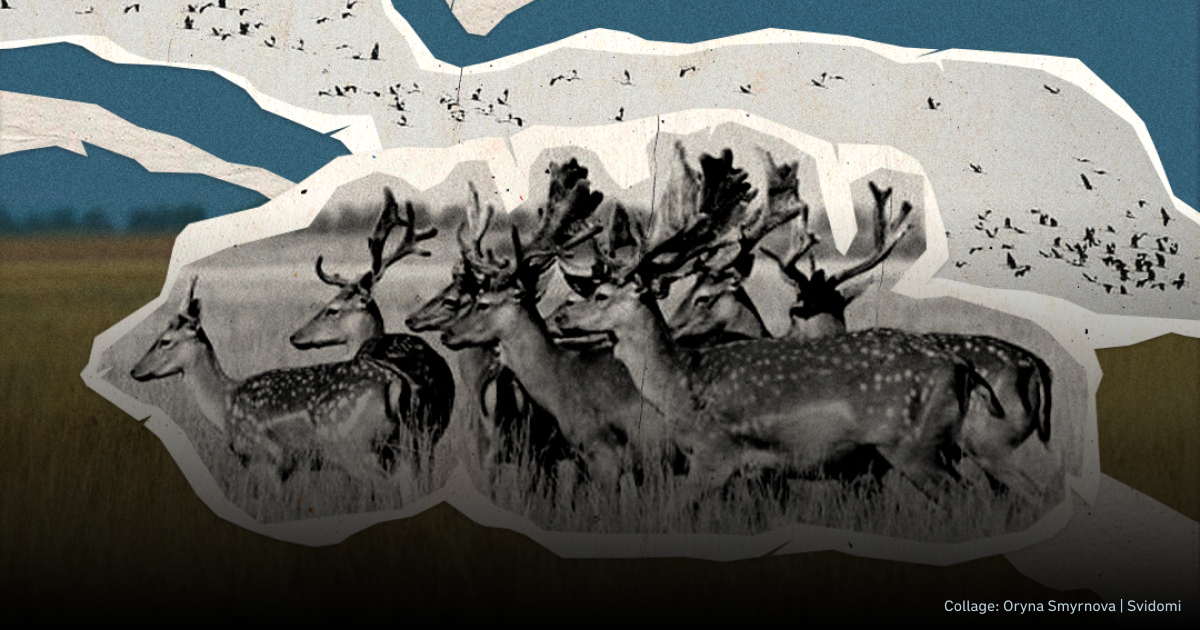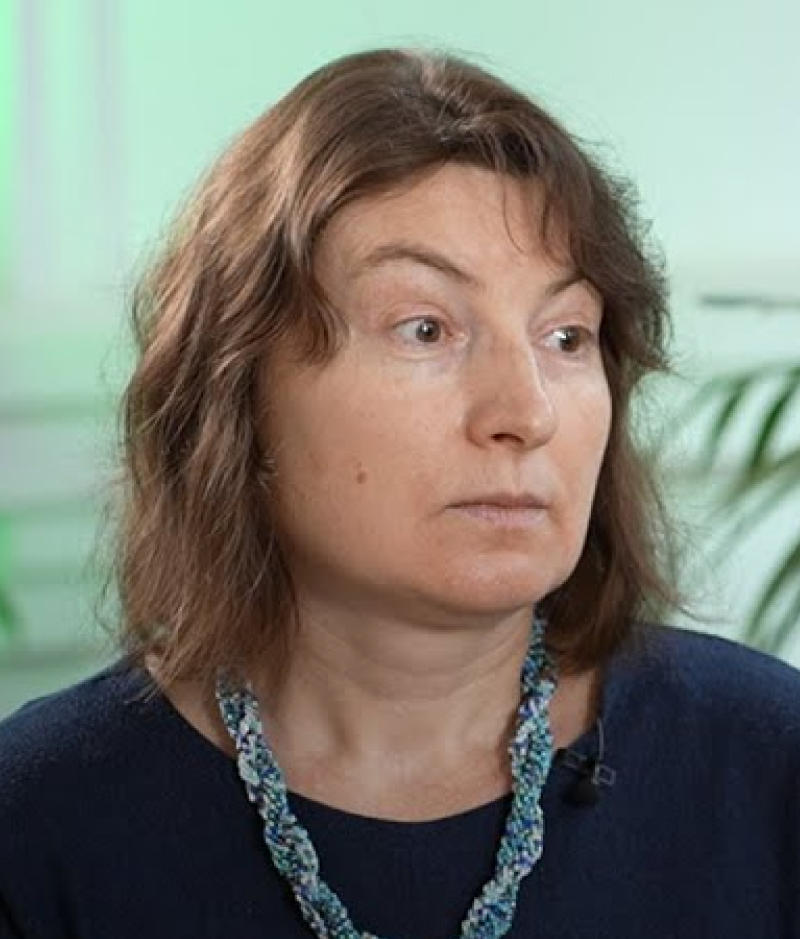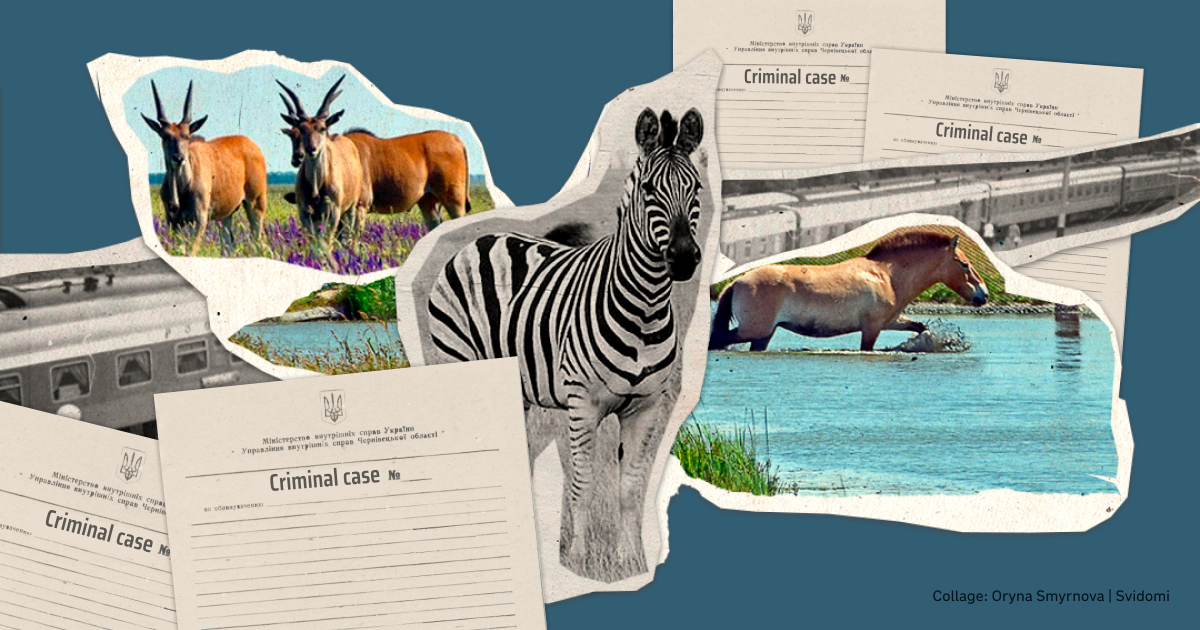Steppe under threat. What is happening in the occupied Askania-Nova reserve?
Viktoriia Mankovska

Russia is destroying the biosphere reserve Askania-Nova, located in the temporarily occupied territory of the Kherson region. In August, the head of the regional military administration, Oleksandr Prokudin, stated: "The last thing I heard is that they (the Russians — ed.) are transporting animals to the occupied Crimea and Russia. So, it can be said that the reserve no longer exists."
However, the director of the reserve, Viktor Shapoval, noted that Prokudin's statement was taken out of context. There is no talk today about the destruction of the reserve.
Nevertheless, it is known that animal transportation has been neglected, and there is a lack of qualified scientific supervision and veterinary care. Svidomi is investigating what is currently happening in the occupied Askania-Nova.
Ukrainian reserve in Russian-occupied Kherson region
Askania-Nova is the oldest nature reserve in Ukraine, located in the Kherson region. It is home to the most immense wild steppe in Europe. The local zoo houses animals from savannas, deserts, steppes and mountainous areas, as well as rare birds of the steppe zone, including Swinhoe's pheasant, common cranes, steppe eagles, and black vultures. Most of these species are listed in the Red Data Book of Ukraine, an official list of rare, vulnerable, and endangered species of flora and fauna.
The Askania-Nova Biosphere Reserve, named after Friedrich Falz-Fein of the National Academy of Agricultural Sciences of Ukraine, has been temporarily occupied since February 24, 2022.
At the beginning of Russia's full-scale invasion, the intense fighting bypassed the territory of the reserve and the conservation complex was spared destruction or significant damage. However, there were clashes and shelling on the edge of the anthropogenic landscape zone.
On February 24, 2022, approximately 250 people were employed in the reserve. Some employees tried to leave, but were unable to due to restrictions imposed by the Russian military.
At 9 am, the first Russian military vehicles passed the reserve. They did not enter the village of Askania-Nova, so the workers tried to continue maintaining the park and monitoring the animals. However, the food supply was cut off in the first days of the invasion. The reserve management faced the challenge of sourcing and storing as much food as possible. A lack of funds exacerbated the situation, but ordinary people and foreign organisations stepped in to help.
The administration bought over 8 million hryvnias worth of animal feed. Later, they also secured remaining veterinary supplies, generators, and repair materials to repair damage from shelling. These supplies lasted for almost a year.

Russian forces entered the village of Askania-Nova in early October 2022 and, later that month, took control of most of the arboretum.
Eventually, the Russians banned staff from entering the park. After shelling on October 21, 2022, Russian soldiers occupied the villagers' houses and apartments for their safety. On January 3, they began positioning their equipment in the zoo next to that of the scientists and digging trenches on the reserve's territory.
In the spring of 2022, the occupation administration tried to negotiate cooperation with the reserve's director, Viktor Shapoval, but he refused. On February 3, 2023, the Russians offered cooperation to Natalia Korinets, deputy director of scientific work. During a search of her home, they confiscated all her equipment and interrogated Natalia and several other scientists at the reserve. Finally, on February 7, 2023, Natalia decided to leave, fearing that her refusal to cooperate would lead to her arrest.
For over a year after the invasion, Askania-Nova operated under Ukrainian administration. However, on March 20, 2023, the Russian army took complete control of the reserve. Only the staff caring for the animals remained, as evacuating them could have endangered their survival.
Damage to reserve during Russian occupation
Before the invasion, fires caused by lightning or arson occurred almost every year in the reserve. Natalia says that the State Emergency Service used to help put them out, but many left their jobs during the occupation. The hostilities also increased the frequency of fires.
As of July 1, 2024, 69 fires occurred in different reserve zones, burning 7,109 hectares. The protected areas 'Stara' and 'Uspenivka' were particularly affected. The most significant loss of vegetation occurred during large fires on August 22 and September 1, 2023.

In August, an explosion, probably caused by a falling shell, occurred in the Velykyi Chapelskyi Pid area, home to ungulates. The fire damaged the ground cover and burned 344.5 hectares of steppe.
According to the occupation administration, no animals were harmed, but after the fire, the remains of about 150 saiga antelopes (the most abundant ungulate species in Askania-Nova) were found. It was later determined that they had died before the explosion.
Veterinarians who examined the animals suspect they died of an infectious disease called braxy, which had not previously been found in the reserve.

"I believe this is due to the occupation administration's neglect of quarantine measures. We don't know if they are following proper animal care protocols. There's a significant risk of infection spreading,"
says Natalia.
In addition, since the invasion began, Russian aircraft have regularly flown over Askania-Nova, causing stress, injury and, in some cases, death. One antelope, Natalia recalls, broke through a fence, and there have been several cases of miscarriages among Przewalski's horses, probably due to stress.
Natalia also mentions that Russian soldiers have damaged fences with their vehicles by driving at night without lights. As a result, ungulates escaped through holes in the fences, but workers managed to put them back. Most of the reserve's animals could die if left unattended outside Askania-Nova.
In February 2023, 27 emus and one rhea died due to an epizootic outbreak (inability to diagnose and provide timely veterinary care). In the second half of November, four buffaloes died due to the occupation administration's negligence in moving them to winter shelters in time.
Meanwhile, in August this year, the Crimean branch of the Russian TV channel Russia 1 broadcast a report claiming that the population of Red Data Book-listed animals in the occupied reserve had almost doubled compared to before February 24.

"This is not such good news because there must be a balance between animals and plants in the steppe. If the population exceeds the limit, the ungulates will consume everything, including endangered plant species, and eventually starve to death,"
says Natalia.
Before full occupation, the reserve staff controlled the animal population. For example, they kept most of Przewalski's male and female horses separate, maintaining only one breeding group if their numbers became too large.
But Natalia notes that incompetent people now run the reserve. No Ukrainian scientist has agreed to cooperate with the occupation administration, so no one monitors the animals' situation.
Who is documenting Russia's crimes?
In 2023, the Russian administration appointed Dmytro Meshcheriakov as director of the occupied Askania-Nova biosphere reserve. He turned out to be a former Security Service of Ukraine employee.
"He is extremely uninformed about the problems of nature preservation. A specialist will immediately notice that he just repeats rehearsed phrases and has no real understanding of what he is talking about. He's a professional liar," says Natalia.
Last year, Meshcheriakov announced the start of the process of transferring Askania-Nova to federal ownership under Russia. Since then, the illegal exchange of animals between the left bank of the Kherson region and occupied Crimea has begun.
On December 1, 2023, Meshcheriakov reported on the 'exchange' of animals from the Askania-Nova zoo with the Rostovsky Nature Biosphere Reserve and the Association for the Preservation and Restoration of Rare and Endangered Animal Species 'Living Nature of the Steppe' from Rostov-on-Don.
Seven ungulates were taken: a pair of Przewalski's horses, bison, Chapman's zebras, and a Père David deer. Natalia suspects that the occupation administration planned to transport eight animals, but another deer died in transit.

On March 7, April 23 and June 27, 2024, three Ukrainian Grey cattle (a rare breed of cattle with less than a thousand left in Ukraine) and ten zebras were transported from Askania-Nova to Yalta's private zoo 'Fairy Tale' and a lion park 'Taigan'.
In total, about 20 ungulates were removed from the reserve. As of January 1, 2022, the total number of animals in the Askania-Nova zoological park was over three thousand, of which 1,623 were ungulates and camelids.
A special commission of the Kherson Regional Military Administration and the State Environmental Inspectorate of Ukraine is documenting all these crimes. Currently, law enforcement agencies have opened four criminal cases and entered the information into the Unified Register of Pre-Trial Investigations. One of these cases involves explicitly the head of the reserve, Dmytro Meshcheriakov.
In addition, reserve officers are directly involved in cooperating with the Commission. In June this year, the Scientific Council established the value of animals under Ukrainian law. If an animal is killed in a protected area, the perpetrators must pay its value multiplied by three.
This data can be used to assess damages for future claims in international courts to seek compensation from Russia.

Natalia notes that the administration cannot disclose much information to protect the safety of those who remain in the temporarily occupied territory and maintain contact with them. However, the Commission is constantly monitoring the state of the reserve. To date, the officially reported damage exceeds 600 billion hryvnias.
The impact of the clashes has not been as severe in Askania-Nova as in other nature reserves that have been on the front line for a longer period of time. However, the reserve remains under threat.


